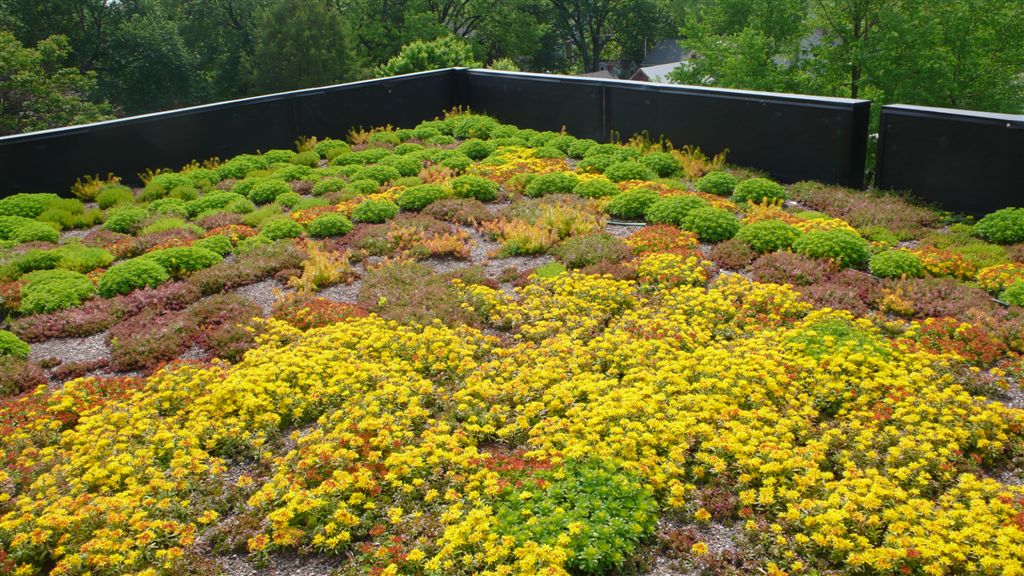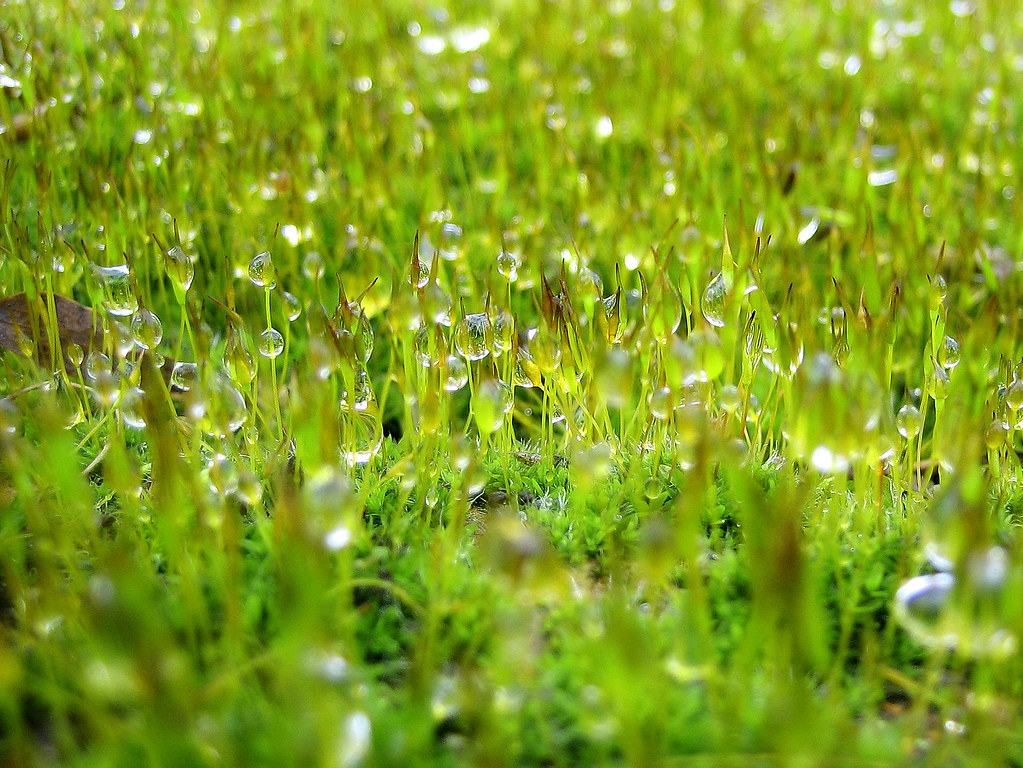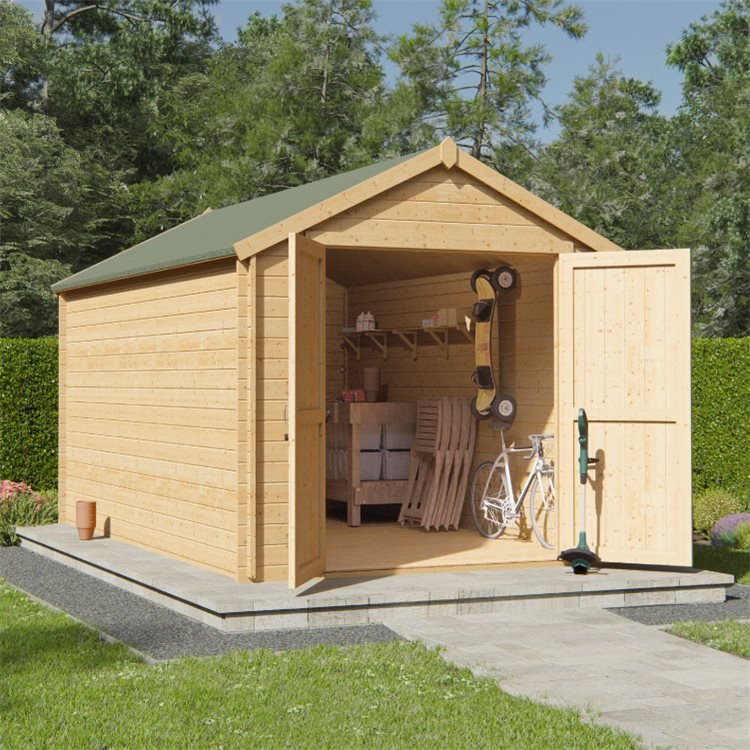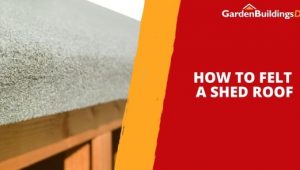Jump to:
You’ve almost certainly heard of a green roof – but do you know how they work? And, if you’re thinking of getting one yourself, do you know how to build one?
These aren’t simple questions, and green roofs themselves aren’t simple either. But luckily for you, we’re on hand to tell you all you need to know about green roofs and even how to install one yourself on a sturdy shed.
There are lots of things to learn when it comes to green roofs, from their benefits, to the different types and, of course, how to install one. We’ll be exploring all of these things so that you can be fully informed about green roofs and know all you need to start one of your own.
So for all you need to know about Green Roofs for sheds, keep reading!

What is a Green Roof?
A green roof, or a sedum roof, is a building roof that has been laid and cultivated with a “green” covering – a natural covering of flowers, grasses, mosses and so on. Green roofs can be created on all sorts of structures – just so long as the roof can support the extra weight.
They’re perfect for roofs that are out in the open and receive lots of rain and natural light as these are ideal growing conditions. However too much of each is dangerous, as it is for all growing environments, so green roofs also need to have sufficient drainage and access for watering.
They can be built on flat roofs or angled roofs – but only where the angle isn’t too harsh. They’re ideal for urban environments where space is limited, allowing you to optimise how much greenery you have per square metre of outdoor space.
As we mentioned earlier, there’s more than just one type of green roof garden out there. These green roof types can be sorted into two categories based on how complex they are and their maintenance requirements.
Extensive Roofs
Extensive green roofs are the less complex, less maintenance-heavy kind of green roof. But that doesn’t mean they’re straightforward. Even extensive roofs need a specialised setup.

Extensive Roofs usually have a “growing medium”, a layer in which stuff grows, of 5-15cm depth. This growing layer is usually filled with mosses, grasses, sedum, or small flowers. The species planted here shouldn’t need watering or much care other than in extreme conditions. Sedum is the most popular choice for extensive green roofs.
This thin growing layer can be comprised of lightweight materials such as sand, crushed tiles, rockwool, and perlite. Underneath this growing medium there should be a filter later, a drainage layer and a root barrier membrane, followed by a waterproof layer and an insulation layer.
These extra layers won’t be especially thick, making for a green roof that is quite lightweight – ideal for a shed. There are also semi-extensive green roofs.
Intensive Roofs
An intensive green roof, as the name suggests, is a bigger and heavier design. Intensive green roofs are usually based within large planting beds that are installed on top of the roof itself.

Intensive green roofs contain species of plants of many varieties, usually including larger and more elaborate flowers, ferns, and ornamental grasses. However, these species need a deep growing medium to facilitate their structures and roots. A growing medium of this depth requires planting beds to contain it.
Because beds are heavier and more unstable than the thin layer of an extensive green roof, Intensive roofs should be designed by an experienced architect or landscaper.
The structural support they need also means they’re generally incompatible with garden buildings, which don’t have the roof strength to support large bed structures.
Benefits of Green Roofs
Now we know what green roofs and their different types are, let’s take a look at some of their amazing and varied benefits.

Appearance
Now, we know that this isn’t the most obvious one to start off with – but we just couldn’t resist talking about how great green roofs look!
When you think about your garden, we’re sure you’d agree that it’s nicer to look at beds of beautiful flowers instead of concrete paving. This rule also applies to green roofs. Rather than simply staring at tiles, felt, or shingles, wouldn’t you rather look at colourful grasses, mosses, or even budding flowers?
Looking and enjoying nature is nicer, and this is backed up with science, too. Spending time in nature and developing a deeper connection to it can help our mental health.
Installing a green roof on your shed can help to develop this connection and give you something nice to look at in your garden.
Insulation
Whether you’ve already insulated your garden building or not, adding a green roof to it will add an extra layer of insulation to the building – how useful is that!
The thick and spongy layers of the green roof, whether that’s intensive or extensive, will act just like a layer of thick insulation. This additional green insulation will keep heat inside your shed and provide an absorbent layer that stops water ingress, reducing the amount of damp that can form inside your shed.
You’ll still want to insulate your garden building properly, of course, but with a green roof you’ll have extra insulation that you won’t be able to get any other way!

Drainage
As well as insulation, green roofs do a great job at providing adequate drainage for your shed and garden. While you’ll need to provide some extra drainage to get your green roof up and running, once it’s all installed you’ll be able to enjoy better and more durable drainage than before.
The thick and spongy layers of soil and filter material will do an amazing job of soaking up all the excess water than would otherwise be running off your shed roof and causing chaos in your garden. In this way, a green roof also acts as water storage.
If you find yourself struggling with wet weather and localised flooding in your garden, a green roof is a good way to start dealing with those flood risks.

Ecological benefits
And now for the most important part – the ecological benefits of green roofs. As you can imagine, there are a huge number of environmental benefits to these roofing wonders.
First of all, the plant species and growing medium (soil) create a great natural habitat for wildlife. Bees, birds, butterflies, and insects will all be very interested in this new green space and will undoubtedly use it to create new homes for themselves.
Green roofs also act as what’s known as a “green wall”, with the plant species filtering pollutants and dangerous chemicals out of the air and the rainwater.
On top of that, these plant species take loads of carbon dioxide out of the atmosphere. This has great, direct benefits to the environment. Remember, any CO2 taken out of the air is Carbon dioxide that’s not directly contributing to global warming – so making your own green roof, even if it’s small, is a valuable contribution to fighting climate change!
With such amazing benefits for your garden, shed, and the planet, we bet you’re finding it hard to resist a green roof now!
How do You Build a Green Roof Shed?
Now you’ve heard about how amazing they are, the one thing we know you’re dying to hear is how to build a green roof. Now, let’s not get ahead of ourselves, because green roofs are complicated to design and install.
The chances are that unless you’ve got experience in making them, you’re going to need a helping hand – and that’s okay! Even though we’re sure you’d like to handle it all yourself, you’ll get better results with professional and experienced help.
But there are a few steps we can complete before bringing in the big guns.
The shed
To get a great green roof, we need a shed that can support it. This means we need a strong, reliable shed with enough roof space that can support a large rooftop garden and withstand that additional load we’re going to be putting on it.
A tongue and groove shed from Garden Buildings Direct is sure to do the job. For a specific model, why not take a look at the reliable Pro Apex Cabin Shed, which uses tongue and groove log panelling for additional strength.

Whichever shed you get, we’d recommend installing extra roof girders to give the roof structure that extra bit of support and reliability. You definitely don’t want your new and beautiful green roof collapsing in the middle of the night!
Getting green
Once you’ve got your shed primed and ready, it’s time to call in the help. The professional will handle most of the planning and construction phase, but it’ll be useful if you’re clued up on the subject so you can lend a hand where possible.
On that note, let’s cover a few things that your builder or structural engineer will be doing during the green roof installation.
- First, a green roof needs a lot of planning. This will include checking whether the roof is strong enough to handle the extra weight. Because they’re more lightweight, you’ll probably be installing an extensive green roof.
- Next, you’ll have to consider drainage solutions for your green roof. Additional guttering and underlaid pipes are an easy way to solve this, but you might also consider river-like channels that control and direct waterflow.
- Then there are all the underlayers that need to be considered. First come waterproofing and insulation layers, and these are followed by a barrier membrane, and a filter and drainage layer before you get to the soil.
- Finally, you’ll be finishing off by deciding what you want to fill your growing layer with – Sedum is what you’ll be probably opting for.

Get Your Green Roof Going!
So, now you’ve heard all about green roofs there’s nothing stopping you from getting your shed in order and getting started on a green mini-project! A green roof will help you, your shed, your garden and, most of all, it’ll help the environment in lots of ways!
Simply click the button below to start browning and kickstart your green roof vision. And when the time comes when you have to fix your shed’s roof, this guide will come in handy.





